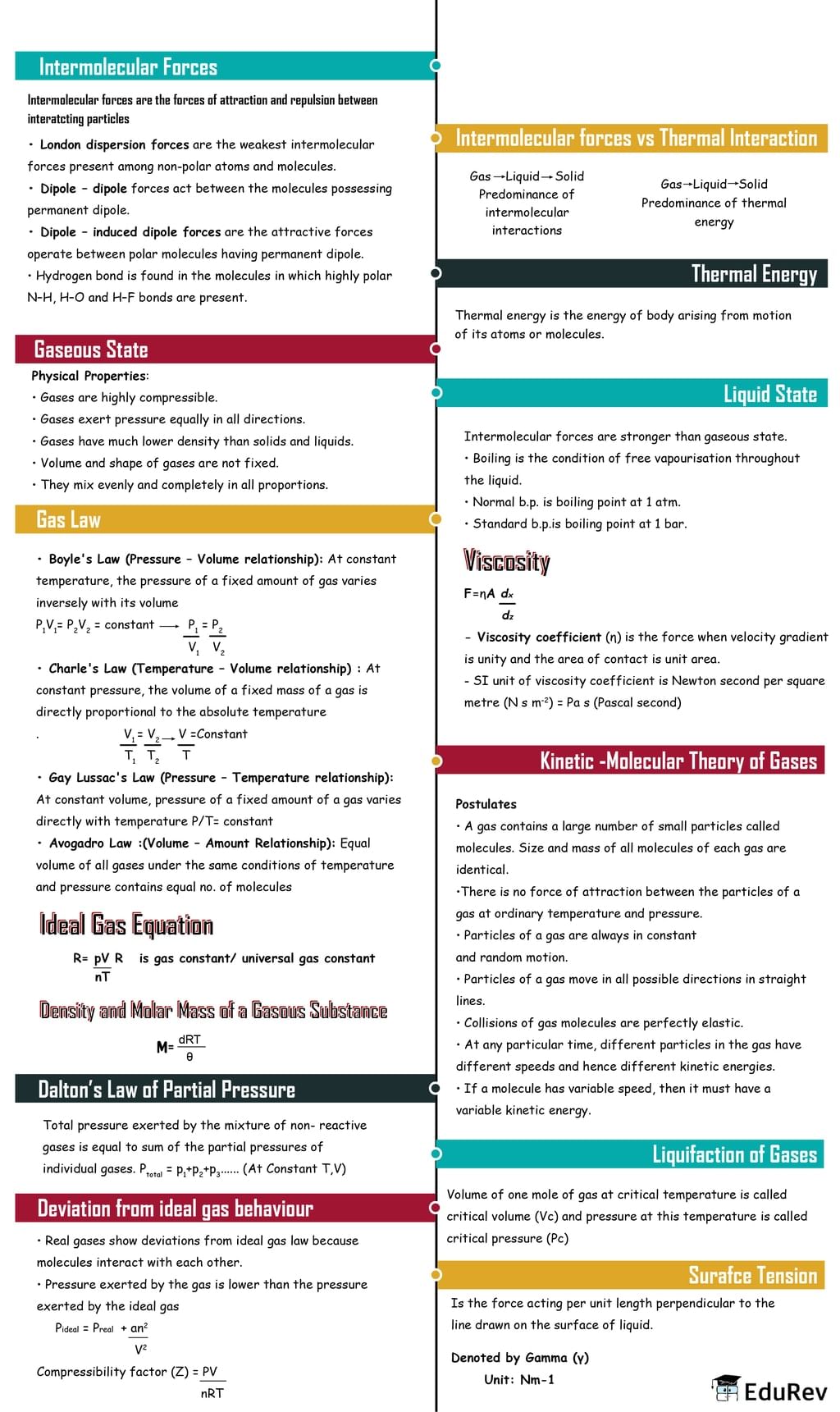NEET Exam > NEET Notes > Chemistry Class 11 > Mind Map: States of matter: Gases, Liquids and Solids (Old NCERT)
Mind Map: States of matter: Gases, Liquids and Solids (Old NCERT) | Chemistry Class 11 - NEET PDF Download

The document Mind Map: States of matter: Gases, Liquids and Solids (Old NCERT) | Chemistry Class 11 - NEET is a part of the NEET Course Chemistry Class 11.
All you need of NEET at this link: NEET
|
114 videos|263 docs|74 tests
|
FAQs on Mind Map: States of matter: Gases, Liquids and Solids (Old NCERT) - Chemistry Class 11 - NEET
| 1. What are the three states of matter? |  |
Ans. The three states of matter are gases, liquids, and solids. Gases have no fixed shape or volume and can expand to fill any container. Liquids have a definite volume but no fixed shape, taking the shape of the container they are in. Solids have both a definite shape and volume.
| 2. How do gases differ from liquids and solids? |  |
Ans. Gases differ from liquids and solids in several ways. Unlike liquids and solids, gases have no fixed shape or volume and can easily expand to fill any container. Gases also have molecules that are further apart and move more freely compared to the molecules in liquids and solids.
| 3. What are the characteristics of liquids? |  |
Ans. Liquids have several characteristics. They have a definite volume but no fixed shape, taking the shape of the container they are in. Liquids also have the ability to flow and have a relatively high density compared to gases. They are not easily compressible like gases.
| 4. What are some examples of solids? |  |
Ans. Solids can be found in various forms. Some common examples of solids include wood, metal, plastic, stone, and glass. These substances have a definite shape and volume, and their particles are closely packed together.
| 5. How do the particles in solids, liquids, and gases behave differently? |  |
Ans. The particles in solids, liquids, and gases behave differently. In solids, the particles are tightly packed and vibrate in fixed positions. In liquids, the particles are close together but can move past one another, allowing the liquid to flow. In gases, the particles are far apart and move freely in all directions, resulting in the ability to expand and fill any container.
Related Searches





















